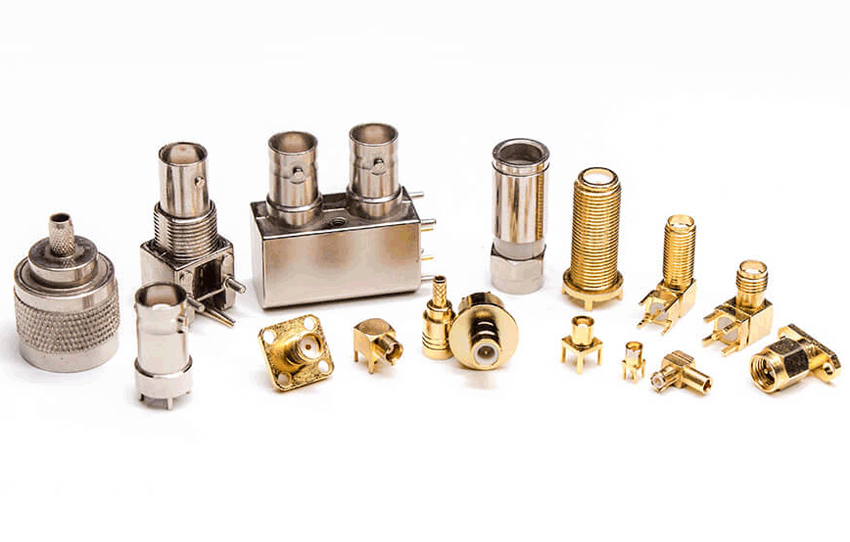The coaxial line represents the most effective way to transmit the signal from the source to the terminal, which is embodied in the coaxial cable assembly. The distance between the source and the terminal is the length of the cable. The most important factor in choosing a radio frequency coaxial connector is the choice. Cables, cables are destined to the specifications and minimum requirements of radio frequency coaxial connectors, such as size and performance requirements.
The selected connector should have a performance not lower than that of the cable. The electrical performance of the radio frequency coaxial connector should be like the extension of the radio frequency coaxial cable, or when the coaxial connector is connected to the coaxial cable, the impact on the transmitted signal should be minimized, so the characteristic impedance and the voltage standing wave ratio are the radio frequency An important indicator of coaxial connectors, the characteristic impedance of the connector determines the impedance type of the cable connected to it. The voltage standing wave ratio reflects the matching level of the connector. Both the cable and the RF coaxial connector determine the transmission system Loss and variation.
Just as the U.S. military standard MIL-C-17 defines the main radio frequency coaxial cables, the U.S. military standard MC-39012 includes many common radio frequency coaxial connectors, which include the mating, external dimensions, materials, and plating of the connectors it covers. , Performance, test methods. There are many varieties of radio frequency coaxial connectors. Choosing the appropriate radio frequency coaxial connector is essential to ensure the reliability of the whole machine and system. When choosing a radio frequency coaxial connector, there are specific needs , There may be a variety of RF connectors to choose from, users generally need to consider the following factors, eliminate one by one, and finally select the desired product.

- First select the RF coaxial connector with characteristic impedance and operating frequency according to the requirements of use. The frequency range determines the upper frequency limit of the application. The connector can be used in a lower frequency range, but it is not recommended to be used for high frequencies. Because the frequency range is too high, the transmission performance of the connector will be reduced, or even transmission failure. For example, BNC and TNC can be connected with small cables, but TNC can be used for 11G occasions and BNC cannot be used for higher than 4G Environment-This is due to different connection methods-a bayonet connection and a threaded connection. If the application requires the highest frequency is 2G, these two series of connectors are available, if the transmission signal has 8G components, then TNC It is an obvious choice. At this time, there may be several series of products to choose from. Another example, if the working frequency of a whole machine is 9GHz and the transmission characteristic impedance is 50Ω, you can choose N, TNC, SMA, SSMA, if the frequency exceeds 12GHz , You can only choose SMA and SSMA.
- Select the appropriate cable according to the transmission power, insertion loss, and shielding requirements. At this time, the cable cost should be considered. It is best not to use semi-rigid or semi-flexible cables to meet the requirements. Each type of RF connector has an adapted cable.
- Determine the connection method of the RF female and male connector based on the size of the use space, the frequency of insertion and removal and the use environment, that is, the connection method of the product series determines the method of connector mating. Common connection methods are: threaded connection, bayonet connection, snap Connection, quick lock connection and blind plug connection. The connection method is the main difference between the different series of connectors. For example, QMA is a quick lock connection and SMA is a threaded connection. The internal structure of the two is exactly the same.
- Determine the fixing method according to the use space (flange, nut, welding).
- Determine the cable termination method. For flexible cables with an outer diameter of less than 5mm, crimping is best, semi-rigid and semi-flexible cables are welded, and crimping is not recommended.
- Determine the connector size and specific specifications according to the use requirements. The size of the cable determines the connector category, such as large connectors, medium connectors, small connectors, ultra-small, or ultra-micro.
